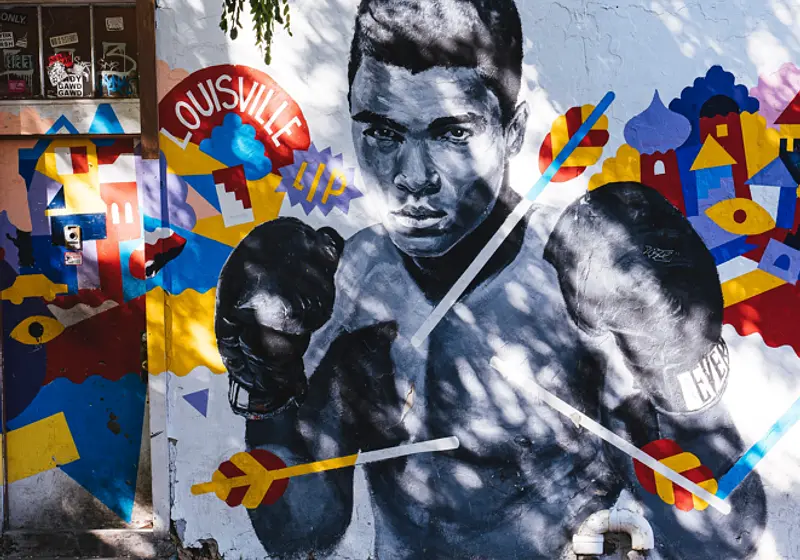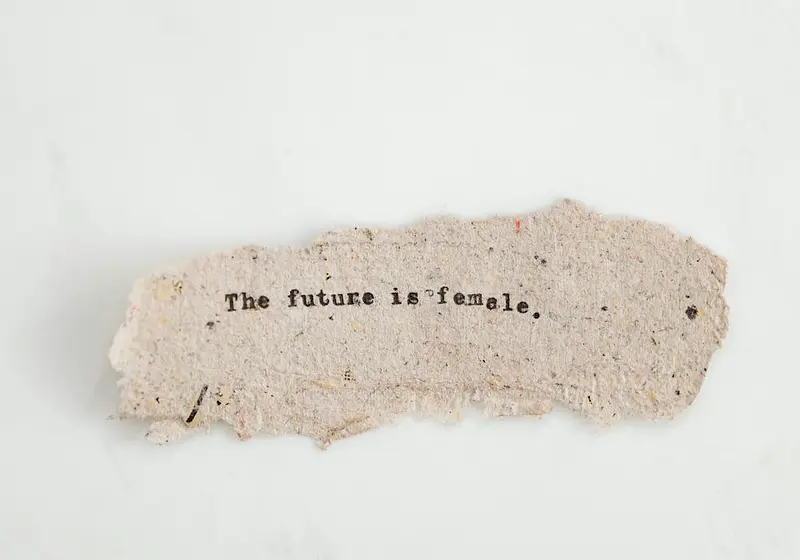“Black history isn’t a separate history. This is all of our history, this is American history, and we need to understand that.”
- Karyn Parsons
Black history is neither a blemish to nor a mere ornament in the rich tapestry of the American story— it is an essential aspect without which this tapestry would be unrecognizable and incomplete. For one of the twelve months of the year, people make a special effort to honor the considerable achievements and contributions of African Americans in the United States.
Black History Month, which takes place in February to concur with the birth month of both Frederick Douglass and Abraham Lincoln, is the result of the 1976 expansion of the “Negro History Week” program established by African American historian and professor Carter Woodson in 1926 to encourage schools to set aside some time to educate children on Black history. While we’re all familiar with the Rosa Parkses and the Martin Luther King Jrs. of history, some key players often go unnoticed, and that is why I’ve compiled a list of five influential Black people who have shaped history in their own unique ways.
Let us slide into your dms 🥰
Get notified of top trending articles like this one every week! (we won't spam you)1. Stacey Abrams
Summary: Stacey Abrams is an author, politician, and voting rights activist who served in the Georgia House of Representatives from 2007 to 2017 and is credited with playing a major role in turning Georgia blue in the 2020 Presidential Elections by registering 800,000 voters— an achievement for which she has now been nominated for a Nobel Peace Prize.
“Whether in elected office or as an active citizen, I believe we are required to find solutions to our most intractable problems, and to use our skills to expand opportunity for all."
- Stacey Abrams
Spelman College-, UT Austin-, and Yale Law- educated Stacey Yvonne Abrams, born in Madison, Wisconsin, on the 9th of December 1973, was raised in Gulfport, Mississippi, and lived the majority of her life in Atlanta, Georgia. Before her political career, she served as a typist and speechwriter during her high school years and as a tax attorney at the Sutherland Asbill & Brennan law firm. Under the pseudonym Selena Montgomery, she wrote a handful of suspenseful romance novels, such as Rules of Engagement in 2001 and Deception in 2009.
She co-founded financial services firm NOW Corp. and beverage company Nourish Inc., then served as CEO of legal consulting firm Sage Works.
Her political career truly began in 2002, when she was appointed Atlanta’s Deputy City Attorney, then later served as the representative for the 89th District for the Georgia House of Representatives from 2007 to 2017. From 2011 to 2017, she was the minority leader in the Georgia House. During this time, she worked on criminal justice reforms, helped pass Georgia's “largest public transportation spending package”, and saved the HOPE scholarship, which assisted low-income students, from being cut.
In 2018, as the United States’ first Black woman to win a gubernatorial nomination, she ran against Brian Kemp and lost by 55,000 votes. Convinced that her loss was due to voter suppression, she founded Fair Fight, which served underrepresented demographics in Georgia and promoted fair elections, voter participation, and voter education. She credits her inspiration to enter politics to a guard’s initial refusal to allow her and her family to enter the Georgia Governor’s Mansion in 1991, even though she was at the top of the guest list, sharing with her audience, “In front of the most powerful place in Georgia, telling me I don’t belong there, that’s resonated for me for the last 20 years.”
While she gained considerable fame from her 2018 gubernatorial run, she was truly thrust into the spotlight in two separate situations: after being the first African-American woman to deliver a response to the State of the Union Address in 2019 and after being credited with turning the red Georgia blue in the 2020 Presidential Elections and winning Democrats the House majority after the victories of Georgians Jon Ossoff and Raphael Warnock due to her role in registering over 800,000 voters. Besides notable accolades like the John F.
Kennedy New Frontier Award in 2012 and the Distinguished Public Service Award from UT Austin, her greatest achievement is being nominated for the 2021 Nobel Peace Prize for her efforts in the 2020 elections.
Take the Quiz: Which Indian city is the perfect holiday spot for you!?
Let's match you with an Indian city that you would love!
2. Ella Baker
Summary: Ella Baker is a human rights activist whose work for the National Association for the Advancement of Colored People, Southern Christian Leadership Conference, Student Nonviolent Coordinating Committee, and Southern Conference Education Fund did wonders in helping African American and other oppressed people’s voices be heard.
“Remember, we are not fighting for the freedom of the Negro alone, but for the freedom of the human spirit, a larger freedom that encompasses all mankind.”
- Ella Baker
Ella Josephine Baker, born on the 13th of December 1903 in Norfolk, Virginia, raised in Littleton, North Carolina, and married to high school sweetheart TJ Roberts from 1938 to 1958, gained lots of inspiration for her life’s work from her grandmother, who told her stories of being whipped for refusing an arranged marriage. She is probably the least known of the five people on this list, but this does nothing to diminish her impact.
After graduating from Shaw University, she served as an editorial assistant at the Negro National News and as a national director of the Young Negroes Cooperative League, which was dedicated to the development of “Black economic power”. She taught African history at the Worker’s Education Project and founded the Negro History Club at the Harlem Library in New York.
Her true life’s work, however, began when she served as a secretary at the National Association for the Advancement of Colored People (NAACP) from 1940 to 1943, then as a director of branches and therefore the highest-ranking woman at the same association from 1943 to 1946. In these roles, she directed leadership conferences where she mentored the famous Rosa Parks and worked on issues regarding school segregation and police brutality.
She was the president of the NAACP’s New York branch, where she worked tirelessly to give women more powerful positions within the organization.
She co-founded In Friendship, an organization that raised funds for Southern civil rights movements, in 1955 and served as associate director of the Southern Christian Leadership Conference (SCLC) from 1957 to 1960, which advocated for “nonviolent actions to bring about social progress and racial justice for Southern Blacks” with Martin Luther King Jr. as the head. Holding the latter position in 1958, she assisted in the organization of the African American voter registration drive, Crusade for Citizenship.
After leaving the SCLC, she served as an advisor of the Student Nonviolent Coordinating Committee (SNCC) from 1960 to 1966, guiding students to work together for social justice and voting rights, and as a member of the Southern Conference Education Fund from 1962 to 1967, encouraging Black and white people to work together for racial equality and educating whites against racism.
While she was a very behind-the-scenes persona in her advocacy for social change, she successfully inspired many and was recognized with the Candace Award in 1984 before her death on the 13th of December 1986 and a posthumous induction into the National Women’s Hall of Fame in 1994.
3. Alvin Ailey
Summary: Alvin Ailey was the founder of the Alvin Ailey American Dance Theater and Alvin Ailey American Dance Center, and he believed that dance could be used as a celebration of African American culture.
"My dancers must be able to do anything, and I don't care if they are black or white or purple or green. I want to help show my people how beautiful they are. I want to hold up the mirror to my audience that says this is the way people can be, this is how open people can be."
- Alvin Ailey
Alvin Ailey was born on the 5th of January 1931 in Rogers, Texas, and died due to AIDS at only 58 years old on the 1st of December 1989, less than a decade after being diagnosed with bipolar disorder. After being abandoned by his father at only three months old, he and his mother worked in cotton fields and moved around often. He sought refuge from his life’s difficulties by watching people dance at church and by writing in a journal. He was openly gay, but kept many aspects of his life private.
Although his claim to fame is in his work as a dancer, he spent his university years studying romance languages and writing at UCLA and San Francisco State University. What finally got him into the art he would dedicate his life to was when his friend Carmen De Lavallade took him to the studio of dancer and choreographer Lester Horton.
After the failure of the “Al and Rita” nightclub act he formed with the famous Maya Angelou, he joined Horton’s dance company in 1953 and became the director that same year, following Horton’s death.
His performances ranged from the Broadway show House of Flowers to Sing, Man, Sing and Jamaica, but he felt as if these never truly fulfilled what he wanted to express with his dance: a celebration of African American culture. This dissatisfaction led to his founding the Alvin Ailey American Dance Theater in 1958, which provided Black people with opportunities to engage with the art and wherein he premiered Revelations, one of his most famous works that reflected memories of growing up in Texas and of Church.
However, the company was largely unsuccessful until a tour was sponsored, allowing him to visit Russia, where he was aired on Moscow television and received over 22 million views.
The company returned and performed for two weeks at the ANTA Theater, wherein all their shows were sold out. In 1969, he founded the Alvin Ailey American Dance Centre, which granted the underprivileged access to art and dance, and in 1988, he was granted the Kennedy Centers Honors in recognition of his achievements.
4. Alexa Canady
Summary: Alexa Canady is the first African-American neurosurgery resident and board-certified neurosurgeon in the United States of America.
“... Somewhere in your life there has to be a passion. There has to be some desire to go forward. If not, why live?”
- Alexa Canady
70-year-old Alexa Irene Canady, born on the 7th of November 1950 in Lansing, Michigan, is no stranger to racial discrimination. When a family member studying psychology tested her intelligence and found that she scored highly, everyone was surprised, as her grades were no more than average. After some investigation, it was discovered that her teacher at the school wherein she and her younger brother were the only African Americans had been switching her test scores with those of a white girl in order to hide her above-average intellect.
In addition, after graduating cum-laude from the University of Michigan, she was told on her first day interning at the Yale-New Haven Hospital that she “must be our new equal-opportunity package”. It is with these two experiences that she, with no definite intention to do so, made history.
The completion of her residency at the University of Minnesota marked her as the first female African-American neurosurgery resident in the United States of America. After that, she served as a pediatric neurosurgeon at the University of Pennsylvania Pediatric Hospital from 1981 to 1982, then worked at the Children’s Hospital of Michigan, where she was the first African American woman to be a “board-certified neurosurgeon” and where she served as the Chief of Neurosurgery from 1987 until her partial retirement 2001.
She spent some of her time at the Children’s Hospital teaching neurosurgery at Wayne State University, where she also conducted some research that led to an anti-siphon shunt that helped with hydrocephalus. She worked as a part-time surgeon and consultant at Sacred Heart Hospital in Florida before her final retirement in 2012.
Alexa Canady has been inducted into the Michigan Women’s Hall of Fame and has won both the American Medical Women’s Association President’s Award in 1993 and the Wayne State University Medical School’s Distinguished Service Award in 1994. Her life’s works and achievements, despite all the racial discrimination directed towards her, make her a wonderful role model for both those who wish to enter into the medical field and those who have experienced prejudice for absolutely no good reason, regardless of who and what they want to become in life.
5. Audre Lorde
Summary: Audrey Lorde is a self-declared “Black, lesbian, mother, warrior, and poet” who wrote multiple works on her experiences as a Black person and as a woman and founded multiple organizations dedicated to women’s and Black people’s rights.
"When I dare to be powerful, to use my strength in the service of my vision, then it becomes less and less important whether I am afraid."
- Audre Lorde
While her parents hail from Barbados and Grenada, Audre Geraldine Lorde, born on the 18th of February 1934 in New York City, is a self-declared “Black, lesbian, mother, warrior, and poet”, and, with all her work towards the achievement of racial equality, definitely deserves to be on this list. After her school refused to publish her very first poem on the grounds that it was “inappropriate”, she had it published in Seventeen magazine at only fifteen years old.
After her studies at Hunter College and Columbia University, she served as a librarian, then moved to Tougaloo College, Mississippi, to work as a writer-in-residence who held workshops for Black undergraduate students.
She taught at Lehman College from 1969 to 1970; at John Jay College of Criminal Justice, where she advocated for a Black Studies department, from 1970 to 1981; and at her alma mater, Hunter College. While she is quite private about her personal life, it is known that she was married to Edward Rollins from 1962 to 1970, and that together, they had two children: Elizabeth and Jonathon.
Her literary works include volumes of poems, such as The First Cities from 1986 and Cables to Rage from 1970, the latter of which showcased themes like love and betrayal. One of her most notable works, however, was Coal, published in 1976, which expressed her “rage at racial injustice" and her “celebration of her Black identity”.
Two years later, she published The Black Unicorn, which spoke of the importance of oppressed groups using their voices to express their struggles. After being diagnosed with breast cancer, which took her life on the 17th of November 1992, she began to write about her experiences in works of prose collectively entitled The Cancer Journals.
Besides all her literary pieces, however, Lorde’s achievements were not limited only to her personal works. In 1977, she served as an associate of the Women’s Institute for Freedom of the Press, which encouraged connecting women's media to the public. In 1980, she helped with the founding of the feminist press Kitchen Table: Women of Color Press; of the Women’s Coalition of St.
Croix, which assisted women who had experienced sexual violence; and of Sisterhood in Support of Sisters, which supported Black women who had experienced apartheid. She spent 1984 to 1992 in Berlin as a professor at the Free University of Berlin, where she taught people that language was a more powerful form of resistance than violence in advocating for social justice.

















.jpg)
